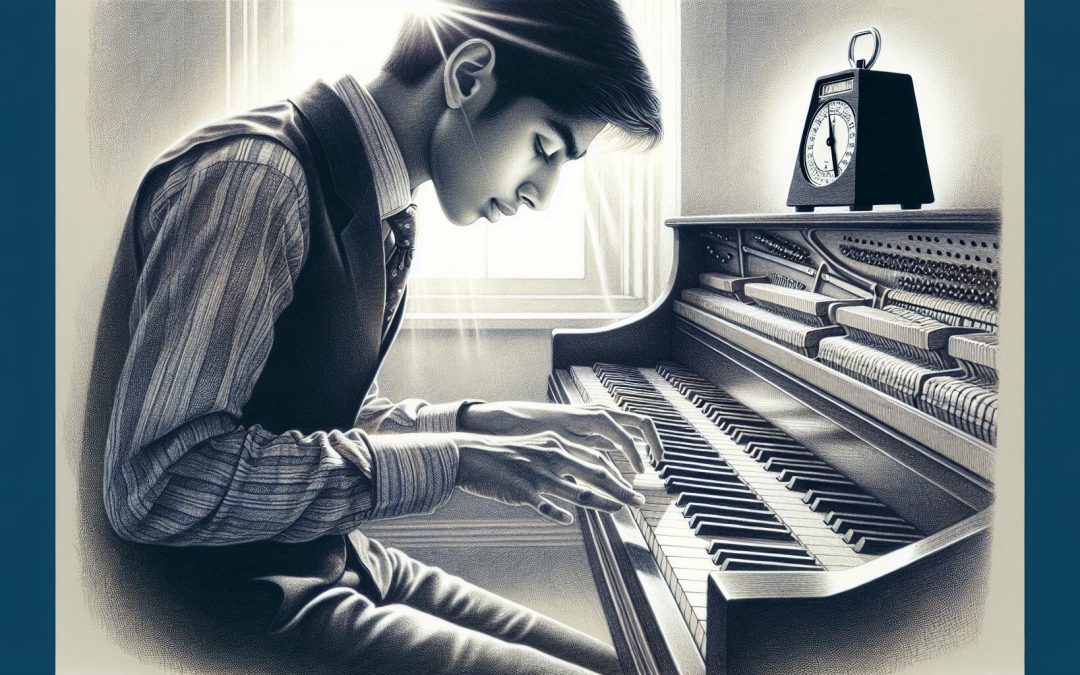Starting on the keyboard can be both exciting and a bit daunting, especially when you're eager to play beautiful music but aren't quite sure where to begin. Classical music, with its rich history and complex compositions, might seem out of reach for beginners. But don't worry, there's a treasure trove of easy classical keyboard pieces that are not only manageable for beginners but also incredibly rewarding to play.
These pieces serve as the perfect introduction to the world of classical music, offering a gentle learning curve while still providing the satisfaction of mastering a timeless work of art. Whether you're a young student just starting your musical journey or an adult revisiting an old passion, these compositions will help you build confidence at the keyboard and inspire you to explore more challenging pieces in the future.
Benefits of Playing Easy Classical Keyboard Pieces
When beginners embark on the journey of playing the keyboard, selecting easy classical pieces as their starting point offers a myriad of benefits that go beyond simply mastering a new instrument. These pieces, crafted by master composers, are time-tested pathways that guide novices through the essential elements of keyboard playing while nurturing a deep appreciation for classical music.
Early Success Builds Confidence. One of the primary advantages for beginners learning these pieces is the immediate sense of achievement they feel. Easy classical keyboard pieces are designed in such a way that they're accessible to novices, enabling them to produce beautiful music without overwhelming complexity. This early success is crucial in building self-confidence and motivation, encouraging learners to persevere in their musical journey.
Development of Technical Skills. Despite their simplicity, these pieces encompass a range of technical skills that are fundamental to becoming proficient at the keyboard. Beginners will find themselves navigating through different key signatures, time signatures, and dynamics, all while maintaining proper hand position and finger techniques. This gradual increase in technical dexterity is vital for tackling more challenging compositions in the future.
Introduction to Musical Expression. Easy classical pieces serve as an excellent introduction to the expressive capabilities of the keyboard. Through these compositions, learners begin to understand how tempo, dynamics, and phrasing contribute to conveying emotion and storytelling in music. This early exposure to musical expression lays the groundwork for a more nuanced and sensitive approach to playing as they progress.
A Gateway to Music Theory. Learning these pieces also opens the door to fundamental concepts in music theory, including melody, harmony, and rhythm. By studying and playing these compositions, beginners naturally absorb these concepts, which are essential for reading music and understanding the structure of compositions. This knowledge acts as a foundation that supports all future musical endeavors, whether they continue with classical music or explore other genres.
Cultural and Historical Appreciation. Easy classical keyboard pieces are more than just notes on a page; they are windows into the past that allow players to connect with the composers and the eras they lived in. As beginners learn these pieces, they also gain insights into the historical and cultural contexts that influenced their creation. This deeper understanding enriches the playing experience and fosters a lifelong appreciation for classical music.
Selection of Easy Classical Keyboard Pieces for Beginners

When embarking on the journey of learning the keyboard, incorporating easy classical pieces into practice sessions can significantly enhance the learning experience. These pieces not only serve as attainable goals for beginners but also introduce them to the vast world of classical music in a manageable way.
Why Choose Classical Pieces
Classical music, with its structured harmony and melody, provides an excellent foundation for keyboard beginners. It encourages learners to focus on both hand coordination and emotion, cultivating a deeper sense of musicality early on. Moreover, playing classical pieces allows beginners to encounter various historical styles, from Baroque to Romantic, which broadens their understanding and appreciation of the genre.
Recommended Pieces for Beginners
To help beginners start their classical music journey, here's a curated list of pieces that are both accessible and rewarding to play:
- "Minuet in G Major" by Johann Sebastian Bach: This piece, although simple in its melody, requires precision in timing and dynamics, making it a perfect piece for beginners to practice.
- "Ode to Joy" by Ludwig van Beethoven: Recognizable and uplifting, this melody helps beginners learn about phrasing and expression in music.
- "The Entertainer" by Scott Joplin: Though technically not a classical piece in the strictest sense, its inclusion here is for its simplicity and introduction to a different rhythmical structure, which is beneficial for hand coordination.
- "Sonatina in C Major, Op. 36, No. 1" by Muzio Clementi: This piece introduces beginners to the sonatina form, with clear sections and themes that are great for working on transitions and musical storytelling.
Each of these pieces offers something unique to the beginner, from technical challenges to opportunities for expressive playing.
Tips for Practicing
Practicing these pieces should be a rewarding experience. Here are a few tips to make the most out of your practice sessions:
- Take It Slow: Always start by learning the notes and rhythms slowly, gradually increasing the tempo as you become more comfortable.
- Focus on Hand Independence: Many classical pieces require hands to move independently of each other. Practice hands separately before putting them together.
- Listen to Recordings: Listening to how professional musicians interpret the piece can provide inspiration and a clearer understanding of the music.
Tips for Learning and Mastering Classical Keyboard Pieces

Learning to play classical keyboard pieces can be a rewarding yet challenging journey for beginners. The nuances of classical music require not only technical skill but also an understanding of the piece's emotional depths. Here are some strategies to facilitate the learning process and help beginners master these timeless compositions.
Start with Proper Posture
The foundation of great keyboard playing begins with posture. Sitting correctly at the keyboard with a straight back, relaxed shoulders, and feet flat on the ground can significantly impact one's ability to play. Proper hand position, with curved fingers hovering over the keys, allows for more precise and fluid movements. Beginners should pay special attention to their posture to prevent tension and facilitate easier playing.
Break Down the Pieces
Diving straight into playing a piece from start to finish can be overwhelming for beginners. Instead, they should focus on breaking the piece down into manageable sections or bars. Working on small segments at a time enables learners to concentrate on mastering one aspect before moving on to the next, making the learning process less daunting and more accessible.
Use a Metronome
Timing is crucial in classical music. Beginners often struggle with maintaining consistent tempo throughout a piece. Using a metronome can help players develop a strong sense of rhythm and timing. Starting with a slower tempo than the piece requires allows beginners to focus on accuracy and precision. Gradually, they can increase the tempo as their confidence and skills develop.
Listen and Learn
Listening to recordings of professional musicians playing the pieces beginners are learning can be incredibly beneficial. It provides insights into how the pieces should sound and offers inspiration. Beginners should listen actively, noting how the professionals handle tempo changes, dynamics, and expressiveness. This understanding can significantly enhance their interpretation of the pieces.
Focus on Dynamics and Expression
Classical music is known for its expressive depth. Beginners should not just focus on hitting the right notes but also on conveying the emotion behind the music. Understanding the dynamics and varying the volume and intensity of their playing can bring the pieces to life. Encouraging beginners to feel the music and express themselves through their playing can transform their performances from mechanical to deeply moving.
Conclusion
Embarking on the journey of learning classical keyboard pieces is both exciting and rewarding. By adopting the strategies outlined, beginners have a clear roadmap to not just play notes but to bring music to life. It's about more than just hitting the right keys; it's about making the pieces sing with emotion and expression. As they practice with these tips in mind, they'll find themselves not just playing music, but truly connecting with it. Here's to the beginning of a musical adventure that promises to be as enriching as it is enjoyable.
Harlan Kilstein began playing piano during covid with no piano background at all. He taught himself how to play learning what to do and what not to do.
Today he's an advanced intermediate player and can help you grow in your skills because he learned all this on his own.








